
Dogs
The dachshund is a short-legged long-bodied breed affectionately referred to as a "wiener dog". (The nickname gained notoriety after an American artist drew a dachshund in a hot dog bun in the early 20th century.) This breed is very popular and is typically within the top 10 most loved breeds. Playful but stubborn, the "doxie" is a member of the hound breeds.
The dachshund has been one of the top breeds based on the American Kennel Club (AKC) tallies.
History & Origin
In the 15th century, a short legged, long bodied dog with hound ears was used to chase and hunt badgers in Germany. The name "dachshund" means badger dog. In addition to badgers, dachshunds were originally bred to hunt wild boar, foxes and rabbits. The dachshund's long body allows the animal to chase these adversaries underground. In Germany, this breed is often still employed in this capacity.
Today, in America, the dachshund enjoys a different lifestyle as a companion animal. The existence of other hunting breeds allows dachshund owners to appreciate their pets' faithful, fun-loving and energetic nature in their home.
The dachshund was officially accepted into the American Kennel Club in 1885.
Dachshunds have long bodies, short legs and deep chests. They are strong in front, a characteristic that enables them to work well below ground. The wrists (also called carpus) are slightly closer together than the shoulder joints when viewed from the front. This feature gives the dachshund the appearance of having "crooked" legs. Alternatively, the hindlegs appear straight when viewed from behind. Due to efforts by US breeders, the crookedness of the legs has been lessened in comparison to dachshunds bred in other countries.
The dachshund's coat can be smooth (shorthaired), wirehaired, or longhaired. The dachshund can be one-colored (red or cream), two-colored (black, chocolate, wild boar, gray or blue and fawn or Isabella with tan markings). In addition to color, dachshunds also come in a variety of patterns. Dapple (light areas and a darker base color), brindle and piebald are some common color patterns.
Dachshunds are bred in the United States as either miniature or standard. The miniature is 11 pounds or less. From the ground to top of the shoulder, the dog stands about 5 inches. The standard dachshund ranges from about 16 to 32 pounds with a height at the shoulder of 7 to 10 inches.
Dachshunds are outgoing and strong-willed – even considered stubborn by some owners – and are very alert.
The dachshund is a well-loved pet. The breed is curious, persistent and enjoys participating in activities with members of the family. Your dachshund may appear to possess seemingly boundless energy, thus keeping you well entertained. Because of their size, dachshunds make a good first pet. Vocalizing readily when strangers approach, the breed can be a good watchdog. If introduced at an early age, this breed can do well with children. Shorthaired dachshunds are particularly easy to maintain because they do not require frequent grooming. One concern for avid gardeners, however, is the dachshund's love of digging.
Dachshunds are intelligent and willing to learn; however, they may be strong-willed. This trait may make Training challenging, but nonetheless fun.
Longhaired and wirehaired dachshunds benefit from daily brushing. This activity promotes circulation to the skin and hair follicles and encourages a healthy coat. Brushing is also relaxing for your pet and provides the opportunity to bond with your dachshund. The pendant or hanging nature of the pet's ears can create an environment for infections and inflammation in the dachshund's ear canal. Longhaired and wirehaired dachshunds that run in the woods may need to have coats checked regularly for mats and burrs.
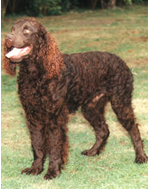 American Water Spaniels: A guide to dogs and puppies of the American Water Spaniel breed
The American Water Spaniel!
The American Water Spaniel, cur
American Water Spaniels: A guide to dogs and puppies of the American Water Spaniel breed
The American Water Spaniel!
The American Water Spaniel, cur
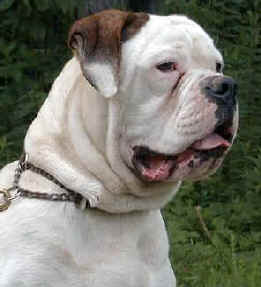 American Bulldog
American Bulld
American Bulldog
American Bulld
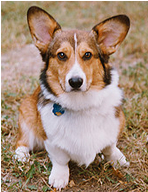 Pembroke Welsh Corgis: A guide to dogs and puppies of the Pembroke Welsh Corgi breed
The Pembroke Welsh Corgi!
The Pembroke Welsh Corgi is a bre
Pembroke Welsh Corgis: A guide to dogs and puppies of the Pembroke Welsh Corgi breed
The Pembroke Welsh Corgi!
The Pembroke Welsh Corgi is a bre
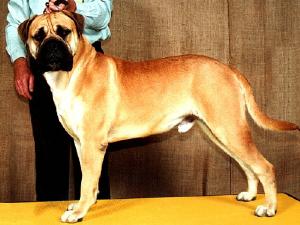 Bullmastiff
Bullmastiff
Bullmastiff
Bullmastiff
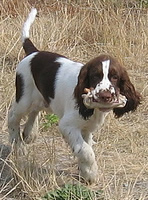 English Springer Spaniels: A guide to dogs and puppies of the English Springer Spaniel breed
The English Springer Spaniel!
The English Springer Spaniel
English Springer Spaniels: A guide to dogs and puppies of the English Springer Spaniel breed
The English Springer Spaniel!
The English Springer Spaniel
Copyright © 2005-2016 Pet Information All Rights Reserved
Contact us: www162date@outlook.com